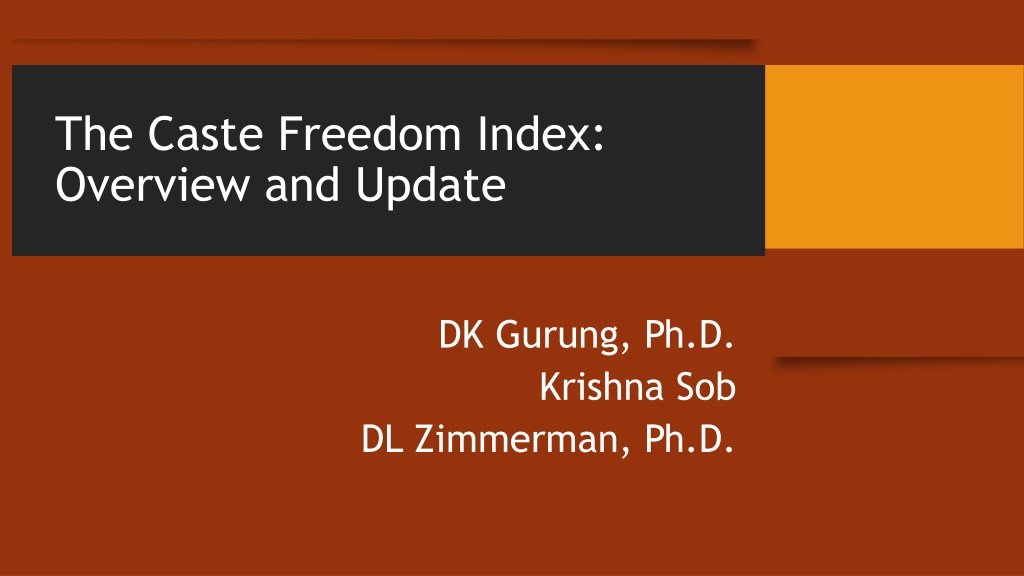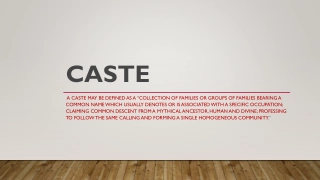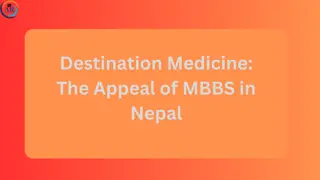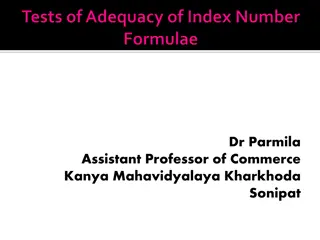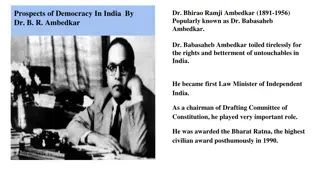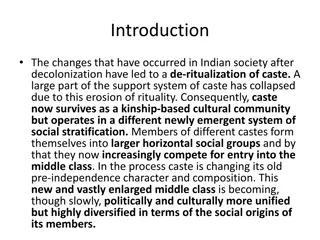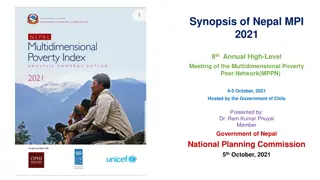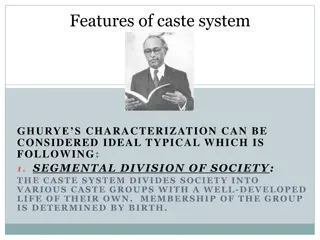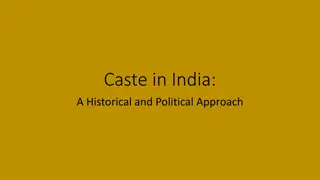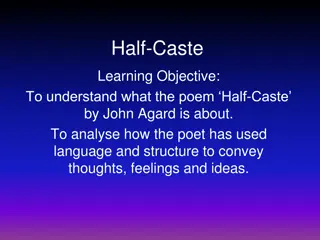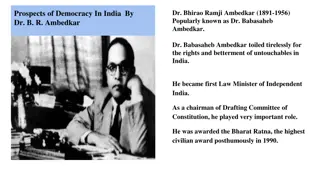Understanding the Caste Freedom Index in Nepal
Delve into the Caste Freedom Index in Nepal, highlighting the current status of Dalits and the need for such an index. Learn about the caste system's power and organization in Nepalese society, and why this index is crucial in combating caste-based discrimination. Explore historical perspectives and the challenges faced due to the prevalence of the caste system.
Download Presentation

Please find below an Image/Link to download the presentation.
The content on the website is provided AS IS for your information and personal use only. It may not be sold, licensed, or shared on other websites without obtaining consent from the author. Download presentation by click this link. If you encounter any issues during the download, it is possible that the publisher has removed the file from their server.
E N D
Presentation Transcript
The Caste Freedom Index: Overview and Update DK Gurung, Ph.D. Krishna Sob DL Zimmerman, Ph.D.
Agenda Dr. Damber Kumar DK Gurung Introduction to ICDR and the Panel Mr. Krishna Sob Current status of Dalits Dr. DK Gurung Overview and power of the caste-system Need for the Caste Freedom Index Dr. Don Zimmerman Overview and status of the Caste Freedom Index
Overview of Dalits Definition of Dalits Size and location of the Dalit population Current status of Dalits
Why we need the Caste Freedom Index
Caste Pyramid (1854 Civil Code) 5 The area showing different groups does not represent population size. Darker shade shows the Hindu caste groups. Source: World Bank/DFID, Unequal Citizens: Gender, Caste and Ethnic Exclusion in Nepal (2006).
Caste Primary organizing principle in Nepal High Caste: Only Bahun Brahman by birth are allowed and continue to serve as Hindu priests High Caste: Only Chhetri Kshatriya by birth became head of state, Army generals, until recently High Caste: High caste Newars Non-Caste (Janajati, Indigenous): Designated to serve in military and as mercenary Low Caste: Muslims Lowest Caste (Untouchables Dalits): Designated to serve as labors in tailoring, shoemaking, blacksmith, etc.
Why the Caste Freedom Index is needed Caste based discrimination outlawed Influential sectors of society and even Governments deny existence of Caste system Discriminations are often not officially recognized Caste-ism is publicly obfuscated, deliberately confused
The Caste Freedom Index Overview and update
The Caste Freedom Index Overview and update There is no single instrument to measure and monitor caste-based discrimination and untouchability, or caste and gender-based violence at the national and global level. ICDR believes that creating a standardized measurement and advocacy framework will provide a needed benchmark for determining the current status of discrimination and a model for focusing and measuring progress towards the elimination of caste-based discrimination.
ICDR is working with a range of stakeholders and experts First envisioned in 2012, the CFI is now being developed through the active participation of the ICDR with a number of national and local Dalit organizations in Nepal, India, and Bangladesh. Starting in Fall 2013, the ICDR received he active technical support of Statistics Without Borders (SWB), an Outreach Group of the American Statistical Association.
Key CFI design parameters 1. Must be able to measure different social and personal domains of caste-based discrimination 2. Must be able to measure different structural domains of discrimination. 3. Must provide a framework for meaningful policy formation, implementation, and assessment over-time 4. Be developed using an organic, bottom-up approach
1. Social and personal domains of caste-based discrimination 1. Constitutional and legal protections 2. Political and social policy 3. Economic access and activity 4. Community relations 5. Individual and family experience
2. Different structural domains of discrimination 1. The right to life, health and shelter 2. The right to family life, privacy and personal dignity 3. The right to employment, fair pay and economic opportunity 4. The right to freedom of expression and freedom of movement 5. The right to political representation 6. The right to access to justice and protection from crime
3. The CFI framework for meaningful policy formation, implementation, and assessment over-time
A. Constitutional and legal principle B. Political and social action C. Economic activity D. Community relations E. Individual and family experience 1A 1B 1C 1D 1E 1. Life, health and shelter 2A 2B 2C 2D 2E 2. Family life, privacy and personal dignity 3A 3B 3C 3D 3E 3. Employment, fair pay, economic opportunity 4A 4B 4C 4D 4E 4. Freedom of expression, freedom of movement 5A 5B 5C 5D 5E 5. Political representation 6A 6B 6C 6D 6E 6. Access to justice, protection from crime
As a result, the basic model of the CFI is: A framework matrix or dashboard which charts the interrelationship between six human rights dimensions and five social and personal domains. The CFI matrix is intended to be capable of completion using a variety of basic data sources and methodologies. Able to provide cross-sectional and longitudinal measurements
4. Be developed using an organic, bottom-up approach On November 12 and 13, 2014, a national workshop was organized at the Union House, Kathmandu, Nepal through the support of the International Commission on Dalit Rights (ICDR) and Statistics Without Borders. The purpose of the workshop was to validate each cell of the CFI matrix against personal reports of caste-based discrimination.
Results Supports the hypothesis that Dalit people currently face discrimination in each of the cells of the matrix. 142 discrete issues were identified within the different dimensions of the matrix. Additional refinement is needed prior to the next step in the development process to adjust for reliability issues.
Next Steps Analysis continues of the data collected through the exploratory study. Further exploratory work is being designed to 1) develop and validate a more reliable set of candidate indicators, and 2) assess their feasibility and the most appropriate modes of data collection
Thank you and Questions
